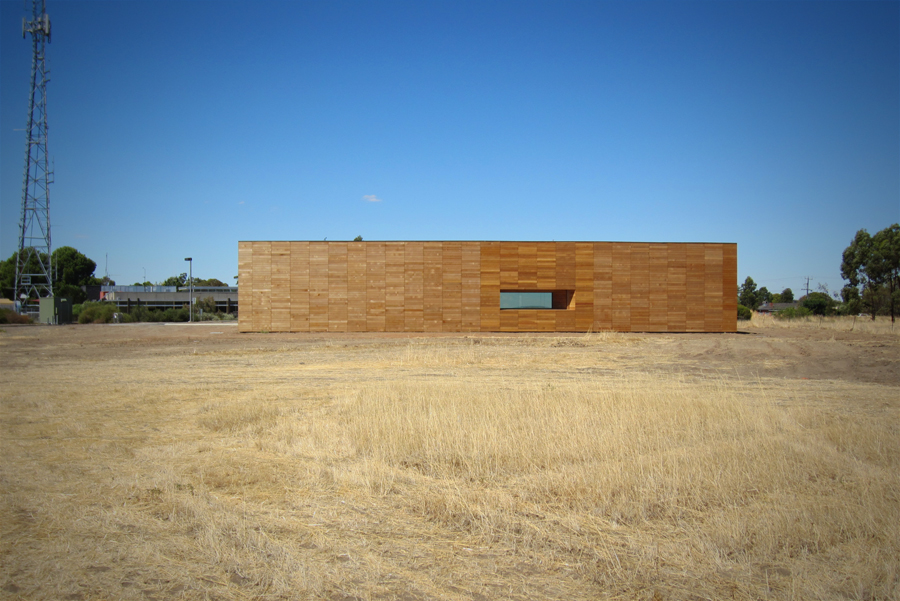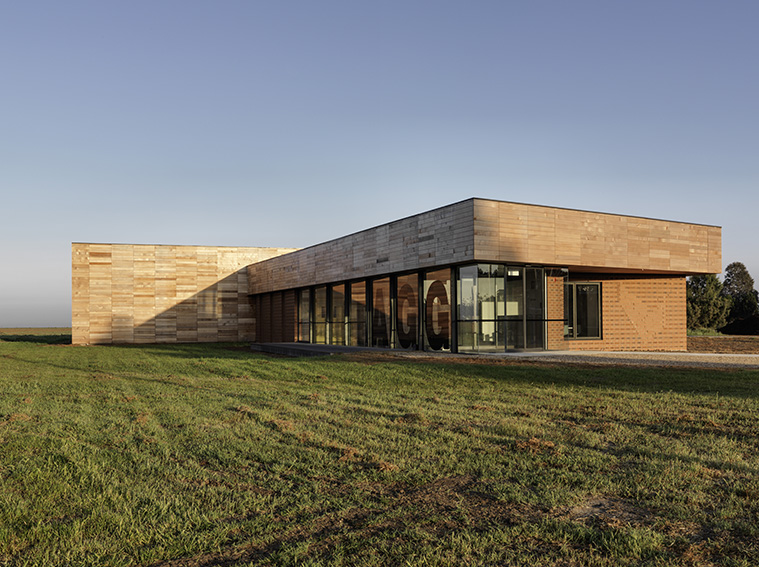Gene storage facility architects use oldest building material in the world
The architects of one of the most sophisticated genetic banks in Australia – a facility that will store 200,000 seed strains for up to 100 years – have relied on one of the oldest building materials in the world.
Red cedar panels were chosen for the exterior of the Australian Grains Genebank in Horsham because they were the most flexible, thermally efficient buffer to the climate, the rain, wind and high solar loads, of the Wimmera plains.
The timber outer continues architectural firm H2o’s pioneering exploration of the use of timber cladding in commercial and institutional buildings, innovation that began with the RMIT textiles building and the first all-timber façade on a multi-level institutional building in Australia.
Australia’s most important seed bank facility combines the old and the new in other ways. State-of-the-art freezers will preserve old and new seed strains – original species endemic to Australia and food crop seeds in use around the world.
On the outside of the building, timber panels will carry images of ancient crop circles and modern plant anatomy. And on the inside, timber floors and walls have been chosen and tinted to reflect the colours of the local environment and fauna.
In addition to preserving ancient seed strains, and contributing to biodiversity and food security, the facility will allow scientists to better develop crops resistant to salt, extreme weather, diseases and pests. The building will play important roles in genetic conservation, education and research.
The Australian Grains Genebank (AGG) was designed by Melbourne’s H2o architects who also designed a sister facility in South Australia, the Plant Accelerator at the University of Adelaide.
The Horsham Genebank merges three Australian storage facilities and is part of an international network of seed banks that includes the Svalbard Global Seed Vault built deep inside a snow-covered mountain on an island in Norway.
At the Horsham facility, an innovative double-skin freezer design has an inner “Esky” box of insulated panels, contained within an outer timber-clad weather-protecting layer. Both layers sandwich a thermally stabilising air pillow.
This design ensures the freezers work with less imposed load, reducing energy consumption and operating costs.
Timber panels on the exterior walls allow for easier maintenance and also recall the historical storage sheds and buildings of the agricultural Wimmera district.




